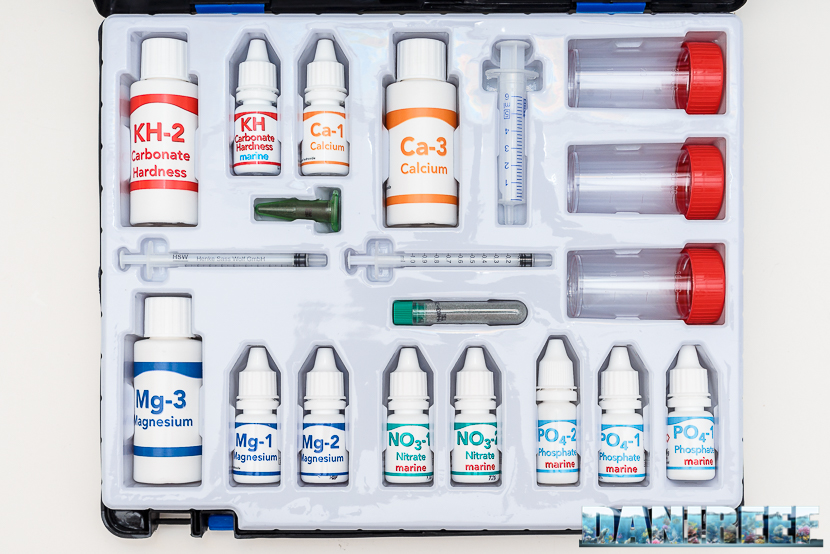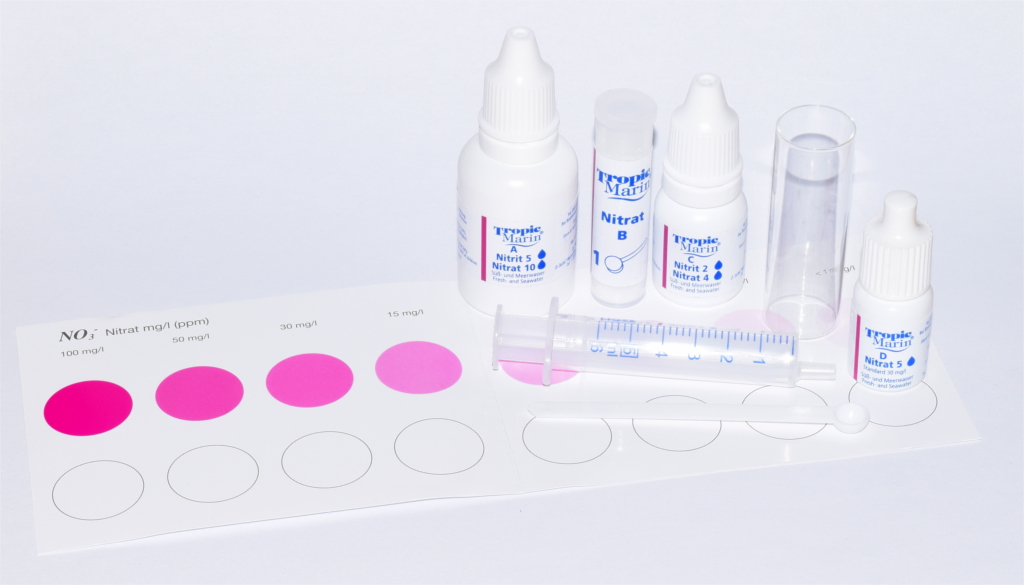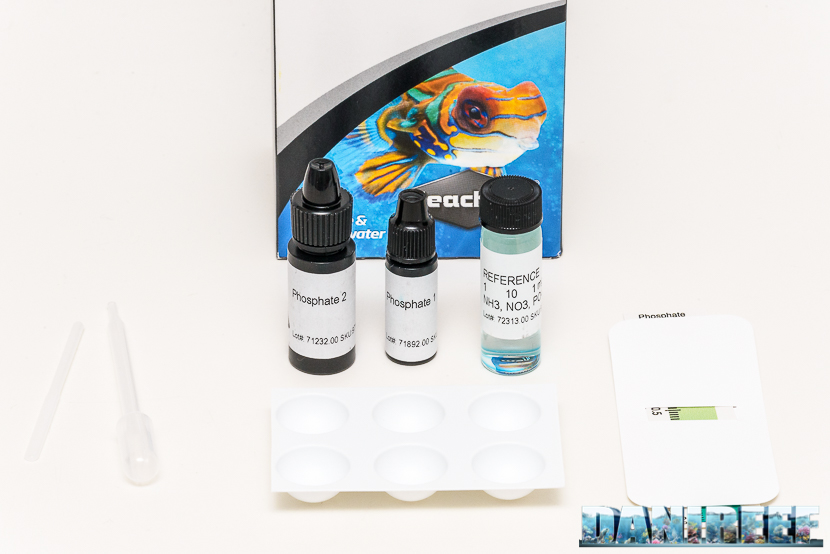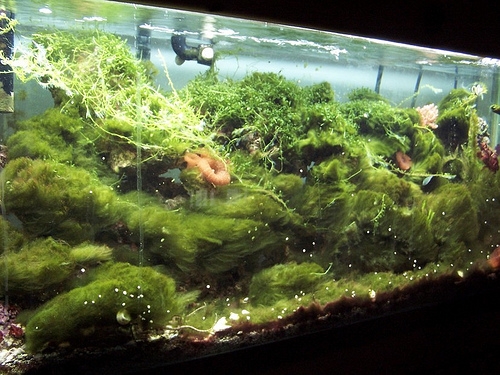
Many of us measure the nitrate and phosphate levels in our aquariums regularly, hoping to find a value of zero, and being disappointed by a high reading. Why?
This is the biggest point of misunderstanding in aquarium keeping.
When a beginner measures nitrates and phosphates, they will obtain values that are very low or almost zero, but in aquarium there is still algae. What does this mean?
It’s very easy: nitrates and phosphates aren’t “almost zero” at all, but present in a relevant quantity.
Let’s take a step back. If we didn’t have any nutrients in aquarium, we wouldn’t have algae. That’s obvious. No nutrients, no organisms.
But when we have algae, and then measure the polluting elements – better call them “nutrients” – we don’t detect them. What happened?
The explanation is easy. All the nitrates and phosphates formed in aquarium because of poor upkeep, the decomposition of substances, the food excess, the metabolic waste products of the fish, and so on, are immediately eaten by the algae.
That’s why the test results show a low concentration; not because the nutrients aren’t produced, but because they’re eaten right when they appear. The same goes for the silicates as well. Hard to find in the aquarium, but still there.
What if there are both algae and nutrients?
This situation is worse than the previous case for sure, because some of the nutrients produced are eaten by the algae, but there is too much to be completely consumed.
So, and I’m speaking to the beginners, do a lot of tests on your water, but don’t underestimate your low values, because you could have nutrients in your tank anyway.
Keep an eye on your aquarium and you will be able to see if you have a prodution of nitrates and phosphates higher than what your system can assimilate.
If you have any kind of question you can leave a comment or write us in our forum, or in one of our social channels.
[Translated by Agnese Poggi]













0 Comments